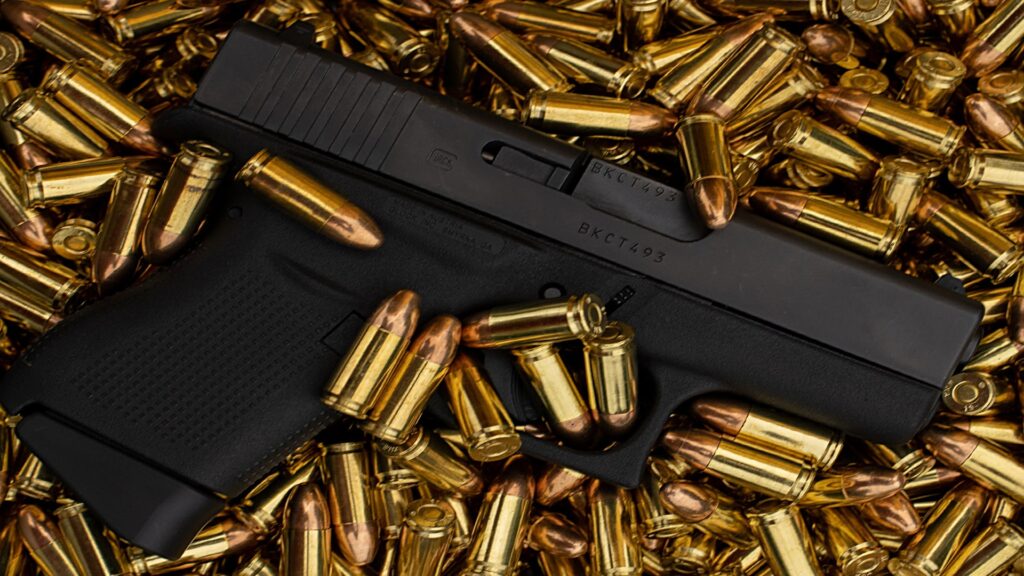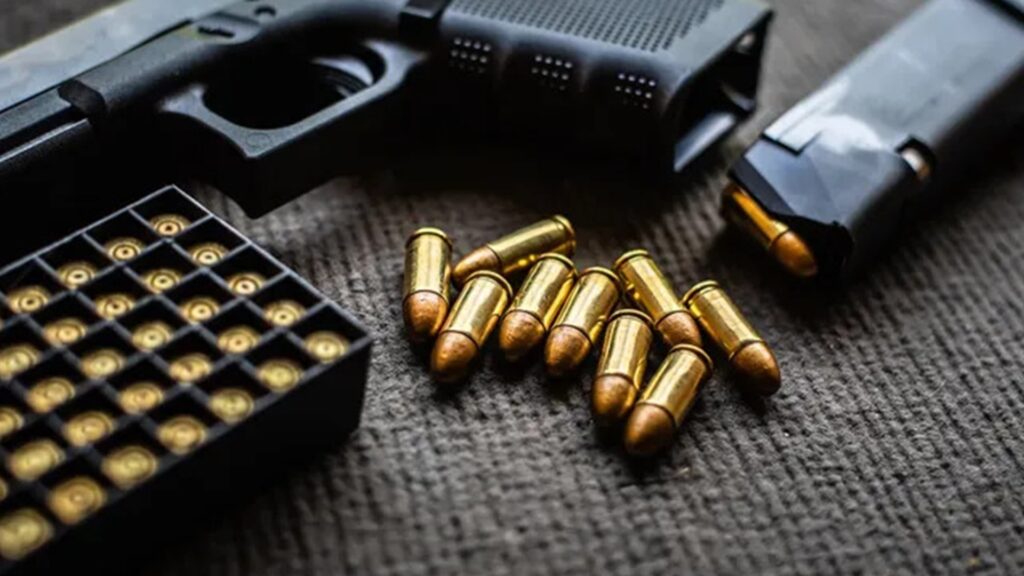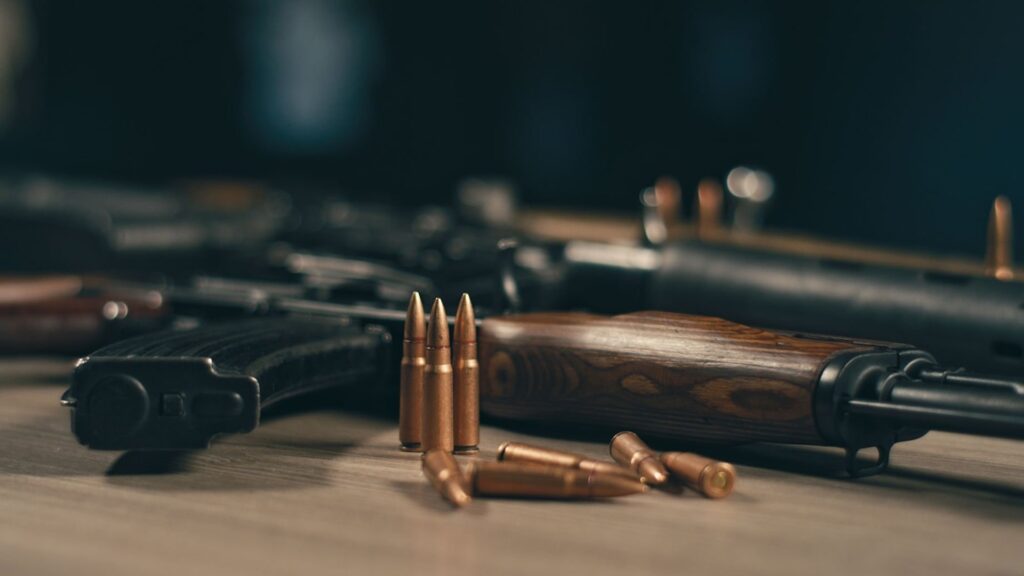Choosing the right ammunition for your weapon can be challenging for some of the newbs out there. We here at Mutant Munition will try to clear some of it up for you. Fortunately, in this day and age of the internet, there is tons of info on this topic. And as long as you are on our Mutant Munition site, we are happy to explain things to you and provide you with tips that will help to choose the right ammo for your pew needs.
First of all, let’s clear up a couple of terms for (Newbs) beginners. As long as ammunition is concerned, you need to understand the difference between caliber, gauge, cartridge, shotshell, bullet, and pellet.
First of all, and it blows my mind that we need to explain this, but ammunition is what your gun fires. With so many new folks realizing that self-protection is needed today, we have had to explain the differences. “Caliber” refers to the diameter of a bullet or the bore diameter of a gun. It can be expressed in either metric or imperial measurements. For example, 9mm ammo uses a bullet that is 9mm in diameter, and .22 ammo uses a bullet that is .22 inches in diameter. It’s all confusing for many except criminals and those that have been shooting for a longtime.
The term “cartridge” means the unit of ammunition. It is more specific than “caliber” as it gives more information. For example, there are .22 Short Rifle, .22 Long Rifles .22 Winchester Magnum Rimfire cartridges. They are all .22 caliber but differ in other dimensions.
The cartridge (or round) is made up of a bullet, case, primer, and powder. “Bullet” is a projectile that flies from a gun. Don’t you love when you see drawings depicting the entire bullet and shell together leaving the round? Cracks us up!
These terms are used when talking about the rifle or handgun ammo. Shotguns have their own.
The term “gauge” (when speaking of weapons do not hole in your nose) means the caliber of a shotgun and refers to the diameter of shotgun bore. The digit means how many lead balls that are equal in size to the inner diameter of a bore it takes to make one pound. For example, for a 12 gauge shotgun, it would take 12 balls that weigh 1/12 of a pound and have a diameter of .727 inches. A 20 gauge shotgun takes 20 balls that weigh 1/20 of a pound and have a diameter of .617 inches. As you see, the higher the gauge number, the smaller the bore diameter. Works the same way needles do for putting holes in your nose or lips. Just go with it, we think we’re humorous.
“Shotshell” refers to a shogun cartridge. A shotshell contains projectiles called pellets (or shots). We are also huge fans of pellet smokers. We shoot meat and smoke it! Ha-ha
So now that you’ve gained an understanding of what all these words and numbers mean, let’s get to the main part and talk about how to choose ammunition and what types of gun bullets will meet your needs at best. We choose
Choosing Ammunition
It doesn’t matter what kind of weapon you are using and would like to use, be it a handgun, a rifle, or a shotgun. Ammunition should be chosen for a specific application to be most effective. You don’t want ammunition that underperforms as well as overperforms. You def don’t want to underperform. You can’t have that in two aspects of your life. She won’t like it.
The major applications include training and target shooting, personal and home defense, and hunting. Add alien invasion to that list as well depending on where you live.
Training and Target Shooting
The ammunition for target shooting is sometimes called range ammo. If you spend or plan to spend many hours at the range honing your marksmanship or just having fun, be prepared to shoot a lot of mutant munition ammo in short timeframes. It means you’ll have to fuel your gun more often and buy ammo in large amounts. Such spending can hit you in the pocket, but you have options. You can thank those high prices on a certain political party.
Cartridges that encase full metal jacket (FMJ) bullets are the best ammo for training. An FMJ projectile typically has a soft lead core encased in a copper shell. Compared to the other types of bullets used for personal defense and hunting, these are the easiest to produce which makes them the cheapest.
.22 LR (or .22 Long Rifle) cartridge is the best for target shooting. It’s a low-power, lightweight, small-sized round that can be chambered in .22 handguns and rifles. Besides its low price, it gives the mildest recoil and muzzle blast which encourages novice shooters to spend more time at the range as their hands and shoulders won’t experience so much fatigue as with other cartridges. To put it shortly, choose cartridges that generate as much recoil as you can take.
For a shotgun, choose the least expensive birdshot shotshells loaded in lightweight pellets, for example, No.7 and higher (the higher the number, the smaller the pellets).
Personal and Home Defense
The main purpose of ammunition for self-defense is to incapacitate. To incapacitate doesn’t mean to kill. But when someone busts your door down and you’re protecting your family….do what you got to do! Change into a mutant if need be and go all johnny Rambo on their a$$. Remember that. To effectively stop the threat, you need a powerful cartridge that penetrates deep enough to reach vital organs and inflicts a sufficient amount of damage. Like men in black huge laser holes damage. Mutant Munition damage.
Cartridges featuring hollow-point bullets are considered the best self-defense ammo. A hollow-point bullet has a cavity that fills with tissue when the bullet strikes a soft target making it expand. An expanded projectile leaves a larger wound channel, which results in greater damage. Our Mutant Munition 9mm hollow point is perfect if you’re a 9mm fan.
Also, expanded bullets stay in the flesh and don’t over-penetrate. Actually, that’s why they don’t recommend using FMJ ammo for self-defense. It’s not made to expand on impact. Such bullets can go through a human target and hit a bystander. That’s kind of important when blasting caps in the hood.
Shotgun owners can also consider buckshot shells for personal defense. The most common buckshot for defense is 00, having a pellet diameter of .33 inches. Birdshot, on the other hand, is too small and lightweight and may not go deep into the flesh and will just piss off that tweaker hopped up on crack and the dew of mountains.
Hunting
In hunting we absolutely want to harvest the animal as fast as possible. We want an effective and powerful cartridge with a hollow point bullet that will kill the animal fast and as humanly as possible. That means you need mutant munition ammo with hollow-point bullets that expand, get stuck in flesh, and, thus, deliver all kinetic energy to an animal.
Hunters never use FMJ projectiles as they only penetrate through an animal and fail to instantly kill it. A wounded animal can run away and die a needless death. Ethical killing is a hunter’s primary responsibility. And say a word of thanks after harvesting folks. It’s the least you can do.
What about penetration here? Hunting bullets are made to penetrate through thick skin and hard muscles. As long as a bullet retains its weight on impact, it will penetrate to a sufficient depth and reach vital organs.
It is important you practice as shot placement is critical as well.
As a hunter, choose ammo designed specifically for hunting. Especially handgun hunters. A handgun wasn’t a weapon for hunting in the first place, and though today there are powerful pistols and ammo on the market, double-check before going on a hunting trip. Don’t drink a lot of caffeine before hunting with a handgun. Some of you drink that Pipe Hitter Pre workout from Alphaeliteperformance.com before a hunt and are all over the place.
The relation here is as follows: the bigger the game, the more powerful cartridge you must use. What is enough to humanely kill a fox can be insufficient to kill a scary Mutant from the galaxy zoltra.
For hunting with a shotgun, all shells are appropriate depending on the species you plan to hunt. Birdshot is good for hunting birds and small animals, buckshot will take down animals like foxes, wolves, deer. Slugs are the most powerful ammo for shotguns. It has a single projectile that is large and heavy enough to kill an elk or a moose.
We hope that now that you’ve learned about different bullet sizes, types of rifle and handgun bullets, types of shotgun shells, you’ll feel more confident choosing ammo for a certain application. Be sure to pick ammo manufactured by a trusted company like Mutant Munition.



